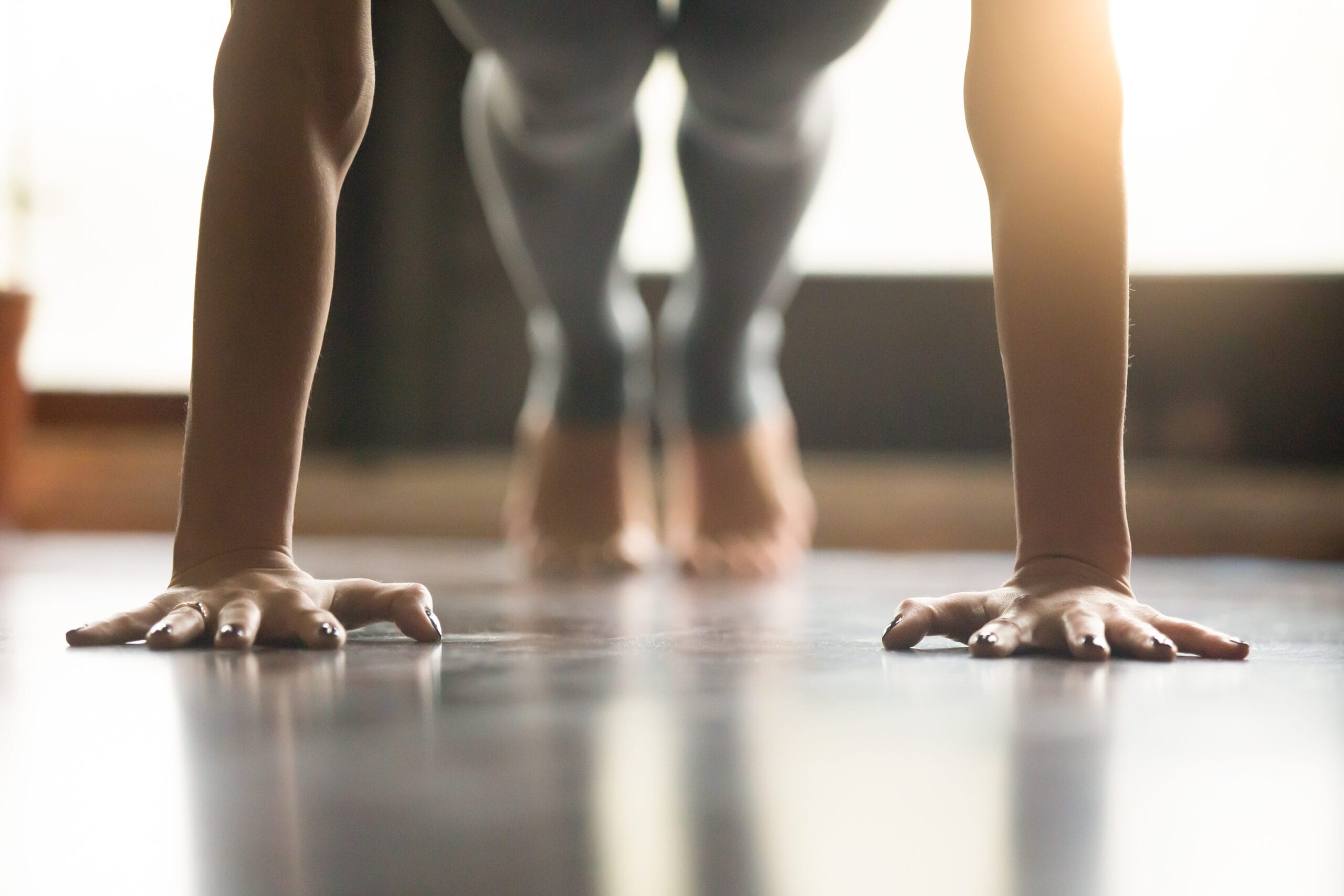
Push-ups are a classic exercise that have stood the test of time, known for targeting multiple muscle groups including the chest, triceps, and shoulders.
However, many individuals often experience shoulder pain after performing push-ups.
If you’ve found yourself wincing in discomfort during/post-push-ups, you’re not alone – it’s actually very common.
But don’t give up on push-ups just yet, there are some actions we can take to relieve this pain once and for all.
In this article, I’ll dive into the reasons behind shoulder pain during push-ups occurs in the first place and offer actionable solutions to help alleviate discomfort during this popular exercise.
Pain during push-ups is usually the result of impingement caused by improper form, muscle imbalances, or overuse. Relieving this pain often involves stretching tight muscles, strengthening your shoulder stabilizers, and focusing on form.
Common Causes of Shoulder Pain During Push-Ups
In order to fix shoulder pain, you have to first try and figure out what’s causing it.
As a physical therapist, this is my job and the specifics of each individual’s pain is best determined by a hands-on assessment.
But here are the most common causes of shoulder pain during push-ups:
Incorrect Form
One of the most common culprits behind shoulder pain during push-ups is improper form.
When executed incorrectly, push-ups can place undue stress on the shoulders, leading to pain and potential injury.
Common mistakes include flaring out the elbows, allowing the shoulders to collapse forward, or arching the back excessively.
Weak Shoulder (Scapular) Muscles
Weak shoulder muscles can also contribute to unwanted discomfort during push-ups.
When the shoulders are not adequately strengthened, they may not be able to handle the load placed upon them during the exercise, leading to discomfort or injury.
This is especially true when the muscles that stabilize your shoulder blade (scapular) are weak.
Having weak scapular muscles leads to incorrect form, thus putting unwanted stress on tendons and soft tissues during exercise.
Overuse or Fatigue
Performing too many push-ups or incorporating them into your routine too frequently without allowing adequate recovery can lead to overuse or fatigue of the shoulder muscles and joints.
This can result in pain, inflammation, and decreased performance.
This is a bigger concern when push-up form is incorrect to begin with.
Shoulder Impingement
Shoulder impingement occurs when the rotator cuff tendons in the shoulder become irritated or inflamed as they pass through the narrow space between the top of the shoulder blade (acromion) and the ball of the humerus.
Otherwise known as the sub-acromial space.
This can result in pain, weakness, and restricted range of motion in the shoulder, making everyday activities such as reaching overhead, lifting objects, or performing repetitive movements challenging and painful.
Weakness or imbalance of the muscles around the shoulder joint, particularly the rotator cuff muscles and scapular stabilizers, can alter shoulder mechanics and increase the risk of impingement.
The most common scenario is that the muscles in the front of our chest (pecs) are tight and the muscles in our upper back and around our shoulder blades are stretched out and weak.
This results in our shoulder blades being pulled forward into a rounded shoulder posture, which makes the already small sub-acromial space even smaller.
This makes it really easy for rotator cuff tendons or the biceps tendon to get irritated with repetitive use (like when doing push-ups).
It’s also common for the upper trap and levator scapulae muscles to be tight, which elevate the shoulder blade a little as well, again making it easier for the rotator cuff tendons to get irritated during shoulder movement.
These postural issues usually occur from years of sitting at desks or otherwise slouching and they’re incredibly common.
The above causes, including poor form, overuse, and weakness, basically all contribute to shoulder impingement, which is likely the root cause of your shoulder pain during push-ups.
How to Fix Shoulder Pain During Push-Ups
Stretch Tight Muscles
The key to relieving that pain is trying to correct the muscle imbalances occurring around the shoulder blade and a big part of this is stretching tight muscles.
I suggest stretching the following muscles as part of your warm up before doing any push-ups:
- Pecs
- Posterior shoulder
- Upper traps
You can stretch your pecs out in a number of different ways, but simply placing your arms on each side of a doorway and stepping forward until you feel a stretch in your chest works great.
For the posterior shoulder, try bringing one arm across your chest (elbow straight) and grabbing behind your elbow with your other arm and gently pulling across (you should feel a stretch in the back of your shoulder).
The upper traps can be stretched by putting one hand behind your waist and gently leaning your neck in the opposite position (should feel a stretch in your neck).
Holding each stretch for 20-30 sec, 2-3x each should be a good start.
Strengthen Your Shoulders
Incorporate exercises that target and strengthen the shoulder muscles into your routine, focusing on exercises that hit your scapular stabilizers and rotator cuffs.
Some effective exercises include:
- Rows
- Lat pulldowns
- Lateral Raises
- Front Raises
- External and Internal Rotations
Just keep in mind that these shoulder exercises should be pain free as well – if any exercise hurts during performance, I would stop.
Never try to force your way through pain!
Pain is your body’s way of telling you something isn’t working right and if you push through pain, you’re likely going to make the condition worse and prolong your recovery.
Anyway, by strengthening the surrounding muscles, you can help maintain proper scapular position during push-ups, thus alleviating stress on the tendons and eliminating the pain felt.
Focus on Proper Form
An important step in alleviating shoulder pain during push-ups is to ensure you’re using proper form.
Keep the following pointers in mind:
- Maintain a straight line from your head to your heels, engaging your core.
- Keep your elbows close to your body, forming a 45-degree angle with your torso.
- Ensure your shoulders are pulled back and down, away from your ears.
- Avoid arching your back or allowing your shoulders to collapse forward.
Modify Your Technique
If traditional push-ups exacerbate your shoulder pain, consider modifying your technique or exploring alternative variations until pain is resolved.
Other variations include:
- Incline Push-Ups: Perform push-ups with your hands elevated on a bench or step to reduce the load on your shoulders.
- Knee Push-Ups: Start with knee push-ups to decrease the intensity and gradually progress to full push-ups as your strength improves.
- Wall Push-Ups: perform push-ups standing against a wall, as it drastically reduces the bodyweight you’re working against.
Allow Adequate Recovery
Ensure you’re allowing your muscles and joints sufficient time to recover between workouts.
Incorporate rest days into your routine, vary your exercises, and listen to your body.
If you experience persistent or severe shoulder pain, consult a healthcare professional for a thorough evaluation and tailored treatment plan.
Again, it’s a bad idea to try and push through pain, so stop doing push ups (or find a pain-free variation) until your shoulders have had time to heal.
Only return to full push-ups when you can do so pain free.
While resting, you could also try icing to help relieve the inflammation around the rotator cuff tendons, as well as avoiding any other aggravating activities.
Final Thoughts
Shoulder pain during push-ups can be frustrating and discouraging, but by addressing the underlying causes and implementing proper techniques and modifications, you can get back to performing them again safely and effectively.
Focus on maintaining proper form, strengthen your shoulder muscles, stretch tight muscles, and modify your technique as needed.
And don’t forget to prioritize rest and recovery to alleviate discomfort and optimize your performance.
And for the final time, don’t keep doing push-ups if they hurt – forcing your way through pain will only make things worse!
Remember- quality trumps quantity, so prioritize proper form and technique over the number of repetitions.
Your shoulders will thank you in the long run and you’ll be on your way to achieving your fitness goals without the pain.
I hope you found this article helpful, but keep in mind the above recommendations are based on the most common causes of shoulder pain.
If trying the above stretches/exercises don’t help, you’ll want to see your physician or local physical therapist for a thorough assessment.
That said, feel free to leave any questions below and I’ll help as much as I can.


